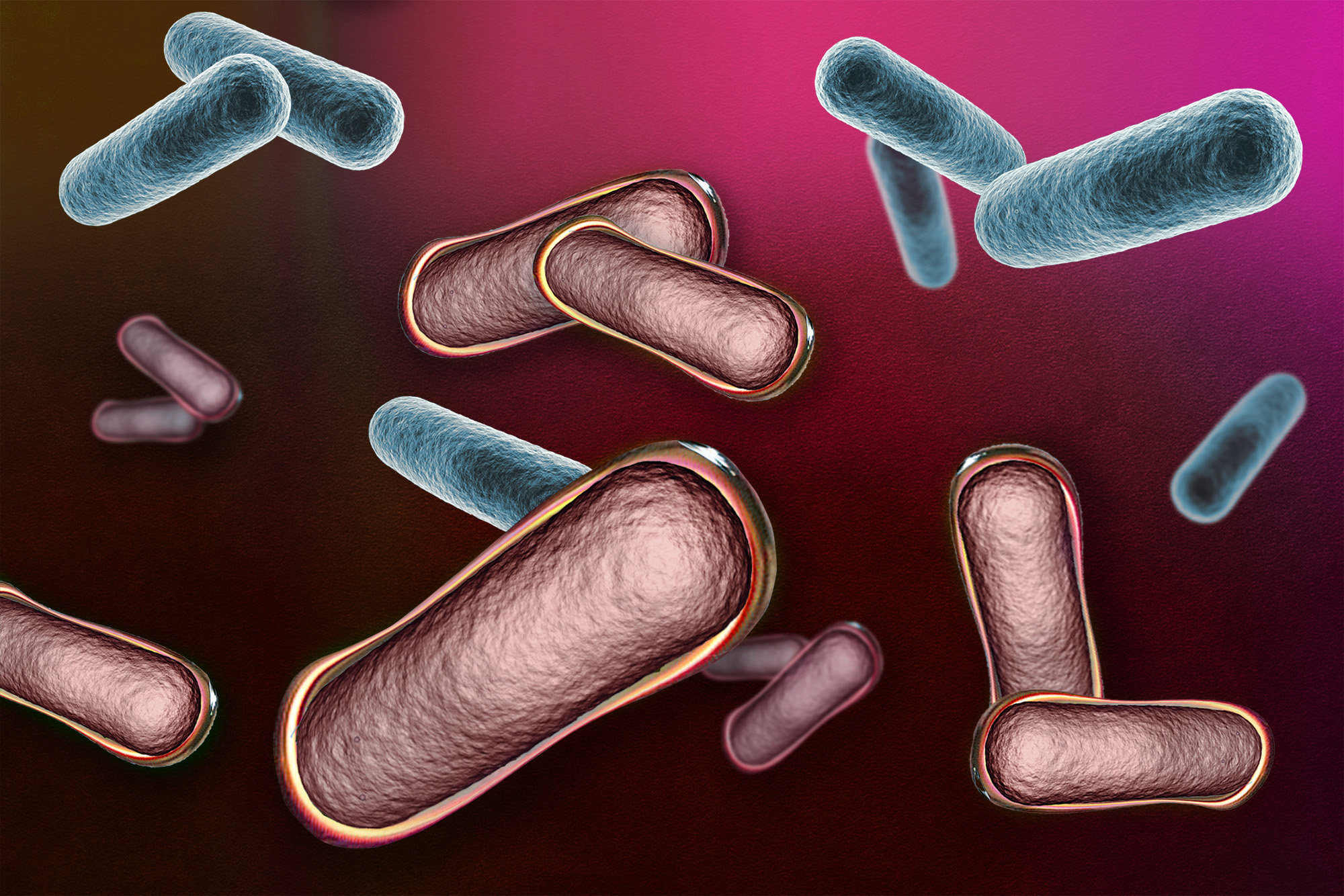The human gut is home to thousands of species of bacteria, some with the potential to combat gastrointestinal diseases from colon cancer to C. difficile infections. One obstacle to developing these “living biotherapeutics” is that many of the bacteria are harmed by oxygen, but MIT engineers have now developed a coating that could help them survive drug manufacturing. It can be used on a strain of E. coli, on bacteria that may aid in digestion of plant starches, and potentially on many other species as well.
Led by Ariel Furst, a professor of chemical engineering, the MIT team set out to protect oxygen-sensitive bacteria by coating them with a material made from metal ions and organic compounds called polyphenols, which form a grid-like sheet when put into a solution. If bacteria are also added to the solution, the material self-assembles into a coating on individual bacterial cells. This coating protects bacteria during the drug manufacturing process, which typically involves freeze-drying them and formulating them as capsules. When exposed to an acidic environment, such as that of the stomach, the coating breaks down and releases the bacteria.
One of the strains that the researchers used to test the coating is Bacteroides thetaiotaomicron. This species, which has enzymes specialized to digest carbohydrates, appears to be more abundant in the gut microbiome of healthy people. Because they are so sensitive to oxygen, however, it has been difficult to study how these bacteria might promote health if given as biotherapeutics.
Don’t settle for half the story.
Get paywall-free access to technology news for the here and now.
